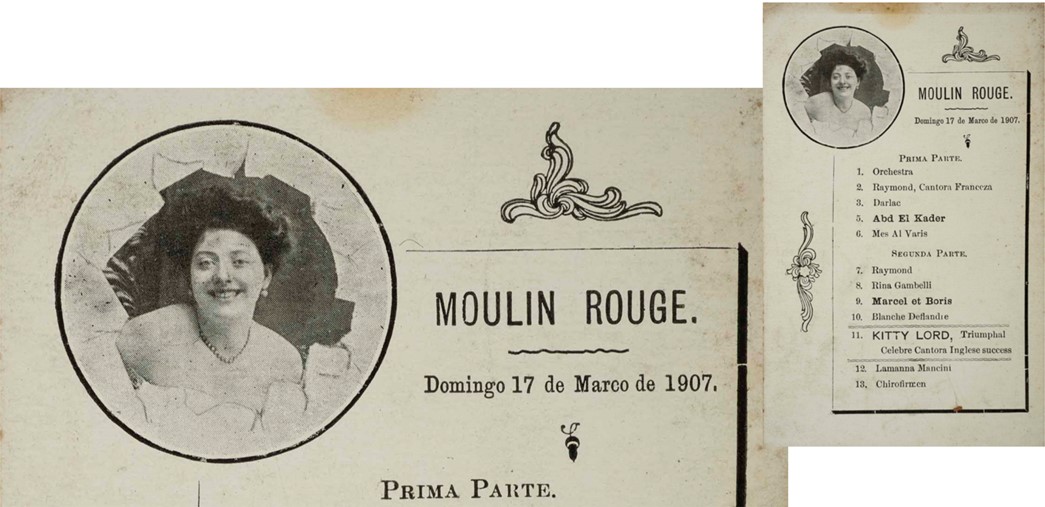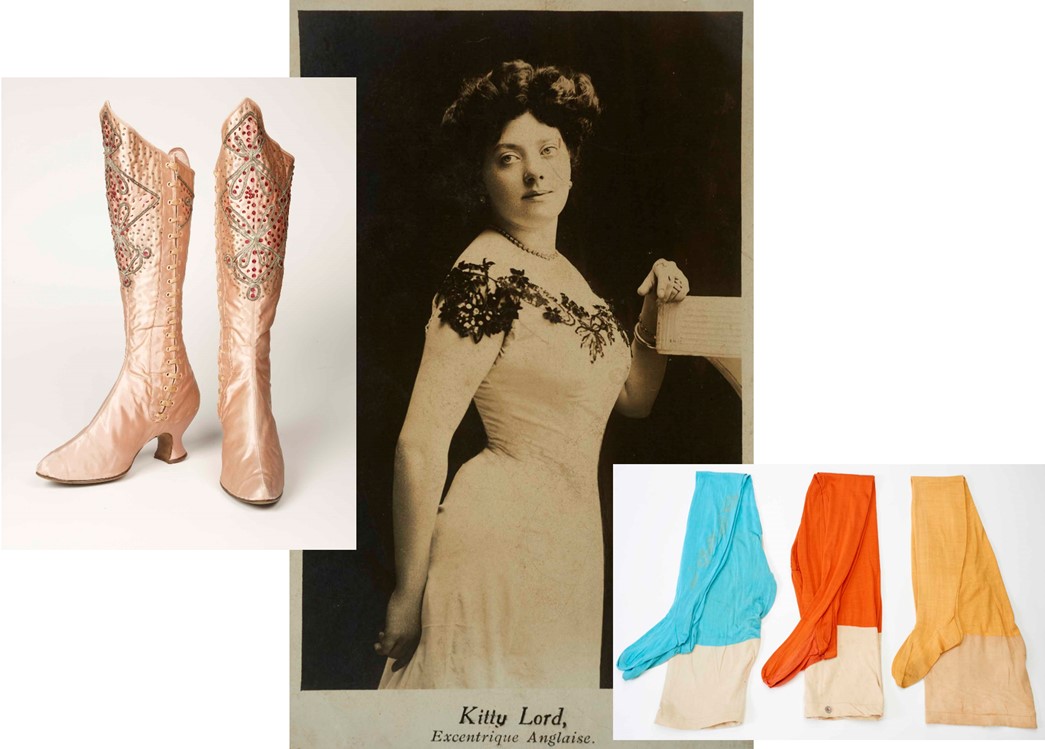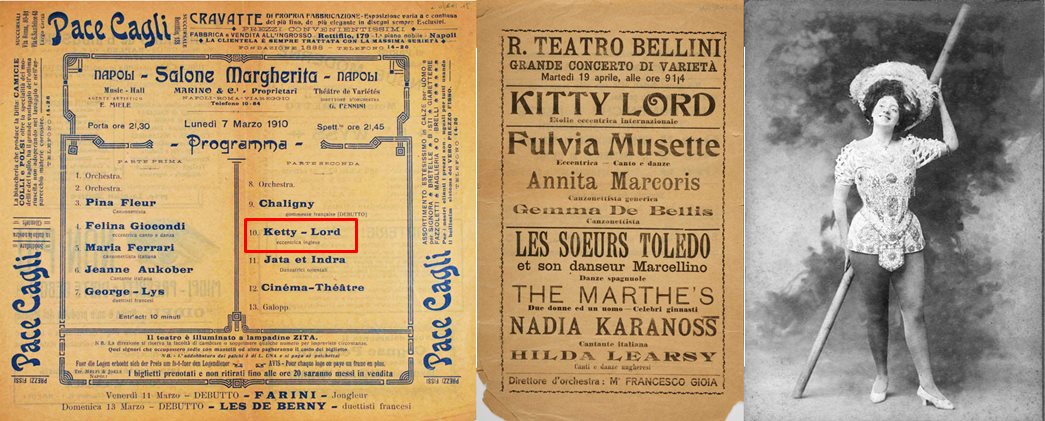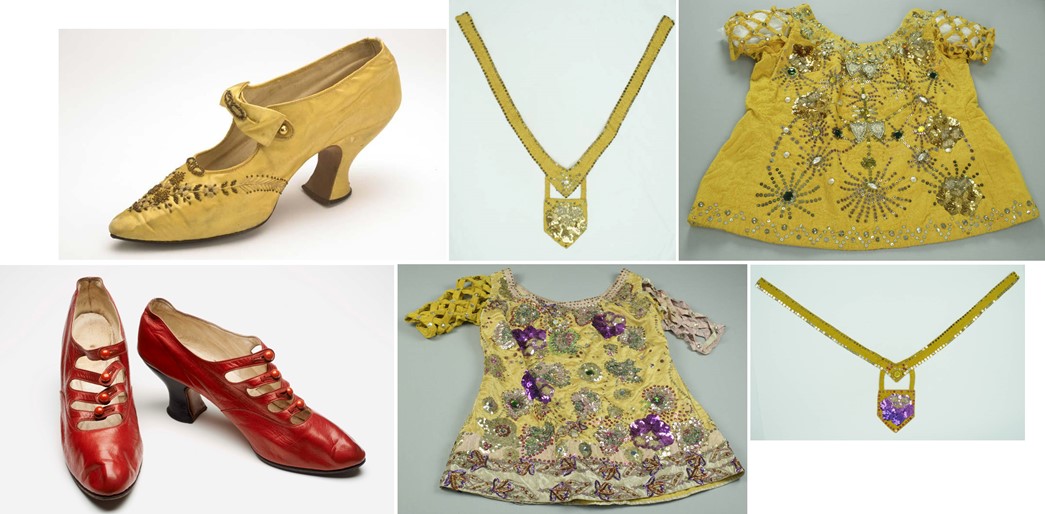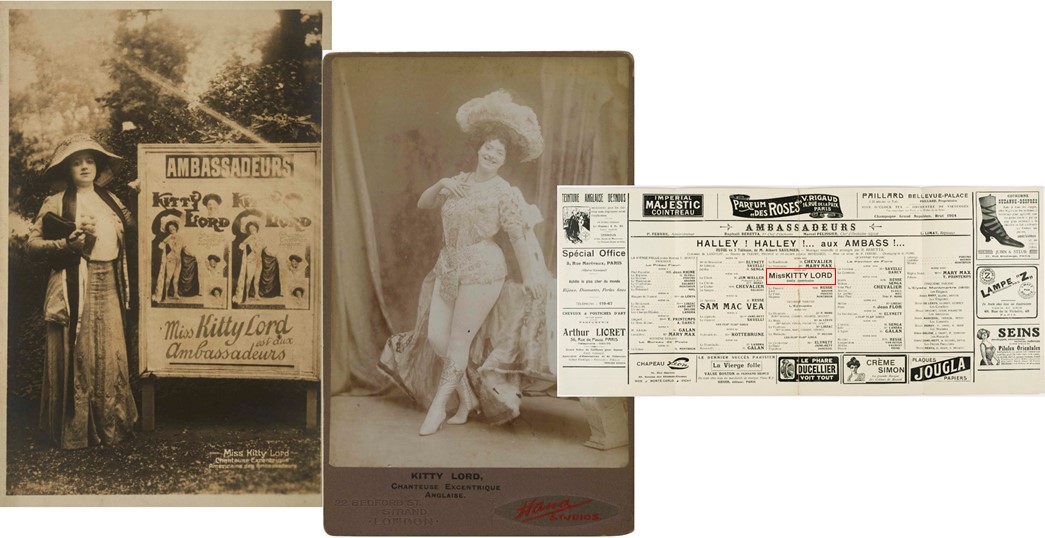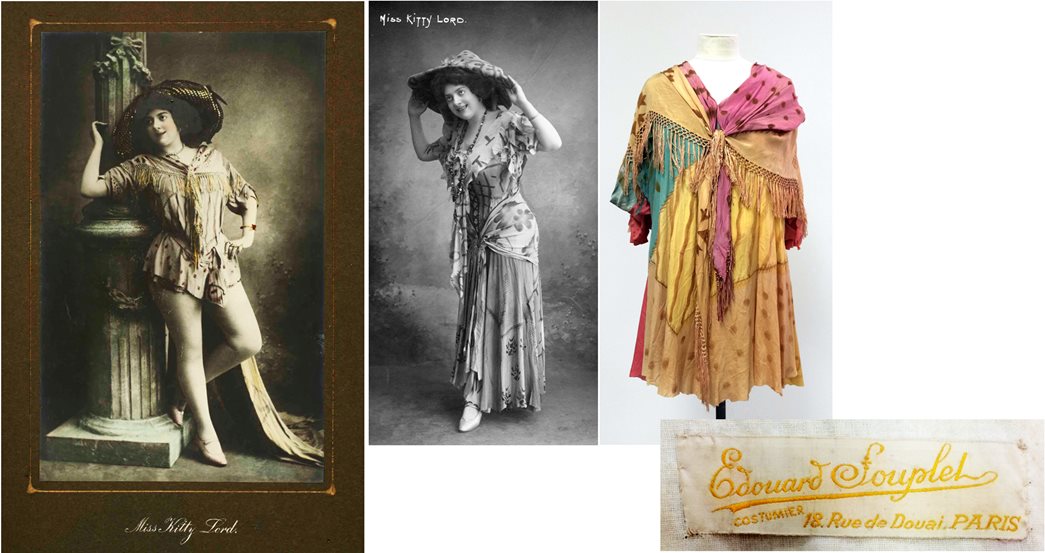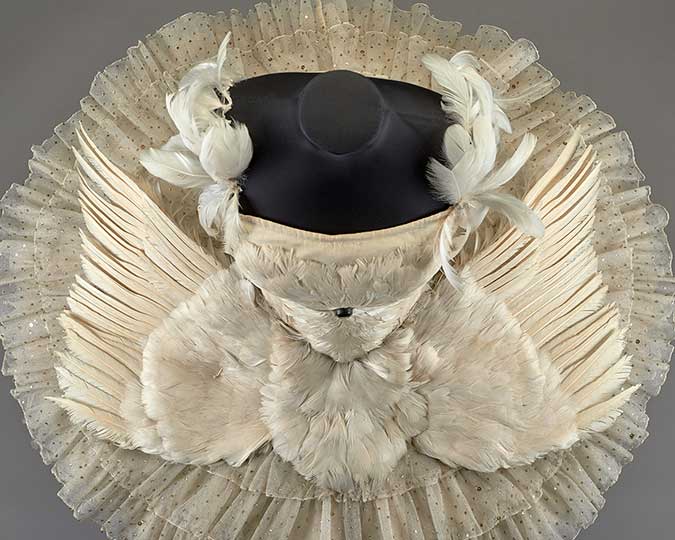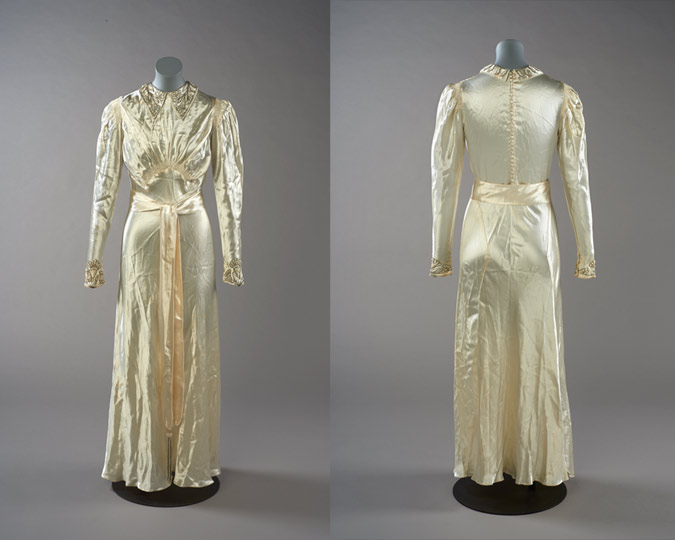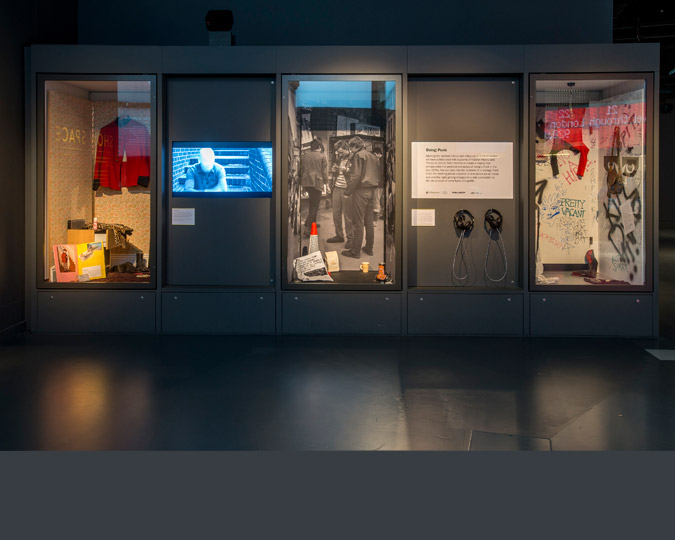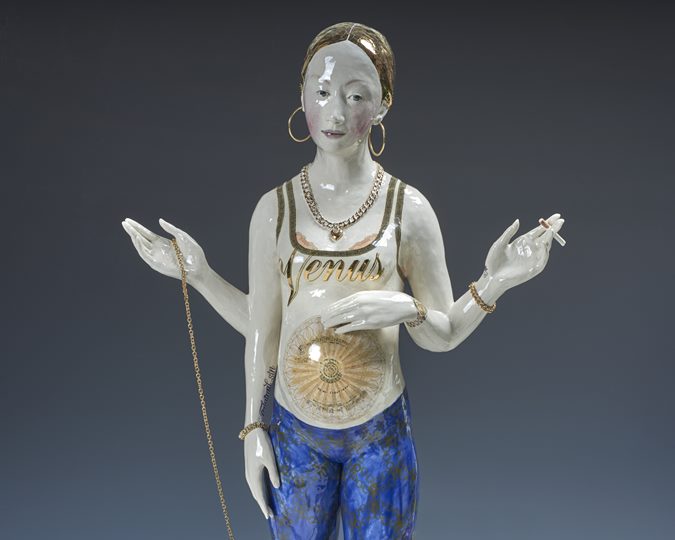Not much is known of eccentric dancer Kitty Lord, who headlined on stages ranging from Italy and France, to Brazil, and London, of course, back in the early 1900s. Here we try and trace the life and career of this fascinating performer through bills, programmes, photos, a serendipitous museum visit and some detective work.
The museum’s dress and textile store does not just hold garments, it also preserves the life stories of their makers and wearers. But not every object arrives with a full biography. In the case of early 20th-century “eccentric dancer” Kitty Lord, it has taken years of intermittent detective work — and lucky breaks — to piece together her curriculum vitae.
Kitty Lord was a professional performer, appearing on the popular stage in the early 1900s. Unlike the rather well-known ‘Queen of the Music Hall’ Marie Lloyd, ‘coster’ comedian Gus Elen, or ‘The Funniest Man on Earth’ Dan Leno, Kitty Lord has been all but forgotten. In her heyday, though, she was extremely popular, often getting top billing and being hailed as international star! Her career might have lasted for two decades, and much of it was spent abroad.
Considering her many travels and the fragility of stage costumes, it is a miracle that some of Lord’s costumes and related material have actually survived!
So, who was Kitty Lord?
“She used to say she was not good-looking, but she got on all right,” reminisced Lilian Ballard about her late friend. During a visit to the museum in 1979, the 81-year-old Ballard was surprised to encounter “a model of Miss Kitty Lord in the Music Hall section”, prompting her to write to the museum. Ballard knew Lord in the 1920s, after the performer’s retirement from show business in 1915. Costume and textiles curator Kay Staniland asked Ballard for additional information about her friend.
The museum’s collection included a small group of Lord’s costumes — tights, boots, shoes, a wig, programmes and photographs. At the time of the acquisition, Lord was unwell and only furnished few details about her career, which spanned between 1894 and 1915. Lord had “played at The Tivoli, The Oxford, The Paragon, and The Hippodrome”, sharing the stage with big names such as Fred Karno, Ida Barr, Gladys Cooper, and later Hollywood movie star Maurice Chevalier. In pre-Internet days, biographical research was difficult, but the ephemera as well as the costumes provide clues to Kitty Lord’s career.
An ‘eccentrica inglese’
One bill, in Portuguese, announces “very important debuts” at the Moulin Rouge, but not the Paris one! This Moulin Rouge was a ‘café concerto’ (or music hall) in São Paulo, Brazil. Kitty Lord — described as an “English singer” — appeared with balancing acrobats, singers, human jugglers, a tightrope walker and other performers. On 28 September 1906, London and Provincial Entr’acte reported that Lord “had a most cordial send off at Waterloo Station”, indicating that her travels were of wide interest. A programme for a Moulin Rouge in Rio de Janeiro, dated 17 March 1907, features a similar line-up with the “triumphal celebrated English singer” — the only performer represented by a portrait.
From a March 1910 programme we know that “Ketty” Lord, “eccentrica inglese” (eccentric Englishwoman) took to the stage at the Salone Margherita in Naples, a famous ‘café chantant’ (literally, singing café). One month later, “international eccentric star” Lord headlined a “grand variety concert” in Palermo, sharing the stage with Italian singer Fulvia Musette, also an “eccentrica”.
The word “eccentric” seems to have been used to describe a particular style of dancing or singing between the 1870s and the First World War. According to a somewhat disparaging article in the French newspaper Le Fin de siècle (1899), the patrons of ‘café chantant’ or ‘café concert’ — where eccentric artistes such as Lord performed — drank and smoked while watching light-hearted, sometimes risqué acts.
“To the sound of catchy, brassy music, the naughty rants and disorderly gestures of the eccentric singer, her crazy wriggling, agitating her suggestive underwear, creates a strange confusion in the atmosphere of the entertainment venues.” (Le Fin de siècle, 15 January 1899)
In a more recent article, historian Veronica Isaac analyses the construction of Lord’s abbreviated tunics in the context of costuming practices permitted on music hall stages: “Although Lord’s costumes exposed the lower half of the body to scrutiny, the upper part of her torso was consistently concealed by a tunic which echoed the fashionable silhouette. […] These direct and deliberate connections between fashionable dress and stage costume would have intensified the excitement aroused by the erotically charged parts that Lord’s outfit ‘revealed.’”
Most performers excelling at this style were all described as eccentric. A 1902 short film of Karina, a “French chanteuse eccentrique”, might indicate what the Caf’Conc’ audience would have expected to see. Kitty Lord’s performance probably included vigorous dancing as well as risqué singing, but sadly so far no recording of her has surfaced.
In August 1910, we find Kitty Lord at the Ambassadeurs on the Champs-Elysées, the first of Paris’ café-concerts, open since 1848. Lord got top billing, interestingly as an “American star”! That she was one of the main attractions is evident from one of the rare images showing the performer in daywear, standing next to her billboard for this renowned venue.
Dancing on the world stage
We find out more about Lord’s life and career through British and French newspapers. For instance, she appeared in Little Red Riding Hood in two venues in London in January 1904. In November, she received a fine for driving an automobile without a license. In July 1905, she was in Manchester, and then Bristol in September. The same year, Lord appeared at the Casino in Buenos Aires in October, and again in 1906.
A large collection of postcards written to Lord by an admirer — in the Harvard Library’s collection — evidence a sojourn in Egypt from March to July 1908. In 1910, she was in Italy before her Paris debut in August, arriving “from America with global fame” (Le Figaro). In the reviews, Lord was called “amusing” and “whimsical”, she was praised for her “grace and enthusiasm” as well as her “brio” (brilliance), with regular four–five encore requests!
We can get an inkling of what her performance consisted of from a 1910 article in Le Journal: “... one must listen to Kitty Lord and her new French chansons which she ‘says’ so amusingly”, implying she might have recited parts of her act. Lord seems to have been firmly established on the Parisian burlesque stage until the end of 1912.
Threading Kitty’s life together
Knowing more about Kitty Lord’s engagements helps with dating her costumes in our collection. A short tunic bears the label of Eduard Souplet — based in Quartier Pigalle, home to the original Moulin Rouge — who provided stage clothes. Lord might have acquired the tunic during her stay in the French capital. Images showing her in costumes made of similar fabrics are likely to date from that period.
We know of her last engagement from a court case, related to a brief appearance in December 1913, at yet another Moulin Rouge in Para, Brazil. Newspaper reports mention a circumstance that might explain the end of Kitty Lord’s stage career. The defendants are a ‘Mr and Mrs Parker’ of Prebend Mansions, Chiswick.
Kitty Lord had married!
Parker is not an uncommon name and without the information provided by Lord’s friend Lilian Ballard, we might never have found out that Lord’s husband was Cyril Parker, a manager at Coutts bank. Ballard thought Kitty’s maiden name had been Burbidge or Burbridge, which helped us fill in some gaps using the website Ancestry.
Finding Kitty Lord
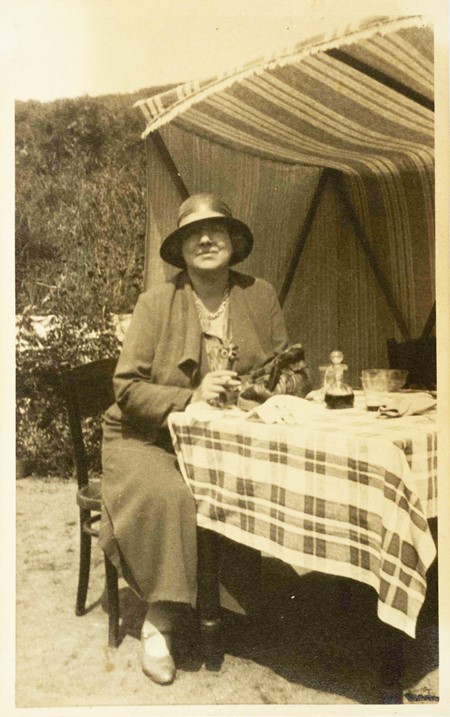
Kitty Lord in the 1920s, after she had left show business. (ID no.: 2002.62/10)
Lord was born “Kate Emma Burbidge”, on 8 January 1883 in St
Pancras, north London, to Edward Owen Burbidge (listed as ‘caterer’ on Lord’s
wedding certificate), and Eliza Jane, née Glendon. While Lord claimed to have
started performing in 1894, the first mention of her — found thus far — is in
the Letter Box section of The Stage on 1 January 1903.
Cyril Edmund Parker — born on 11 October 1884 in Somerset — was a year younger than Lord. By 1911, Parker had moved to Ealing and was a clerk at Messrs Coutts, private bank.
The couple continued to live in west London, and in Teddington from the late 1930s, which is where Cyril Parker died in September 1962. Lord herself passed away on 30 November 1972, a year after her costumes had been acquired by the museum. She left almost £15,000 (around £140,000 in today’s money), which implies the couple lived a comfortable life.
Biographical snippets from many different sources have given
us a good idea of Kitty Lord’s life and career, but some questions still remain.
What did she do before appearing in Little Red Riding Hood in 1904? Was she married three times, as Ballard claimed in one of her letters, and was one of her husbands really an Australian sheep farmer? How did she meet Cyril? What exactly did she do on stage? And, most intriguingly, what did Kitty Lord think about the years she spent performing abroad and did she enjoy the five decades of her retirement? If you can help us fill more gaps in Kitty Lord’s life story, please get in touch!
We have two pairs of her shoes and a stunning pair of jewelled boots which you can see on display at the Museum of London, London Wall, made by a company called HM Rayne based in Waterloo, London in the mid to late 1880s.
Museum of London is closing the doors of its London Wall site in December 2022 and will open a brand new museum at West Smithfield in 2025. So don't miss your last chance to visit the historic London Wall site and view the collections before it's too late!
Love fashion? Subscribe to our fashion newsletter to read more stories from our collections, and see upcoming events and exhibitions.








